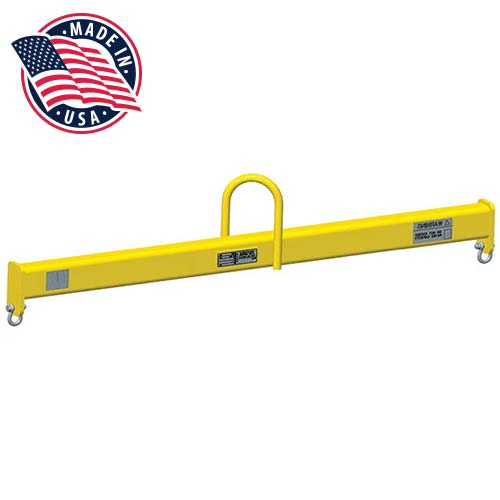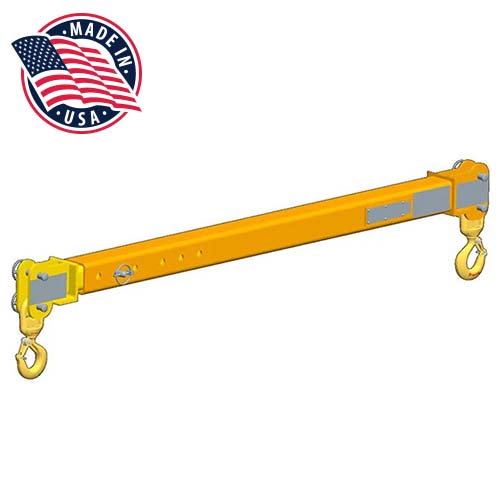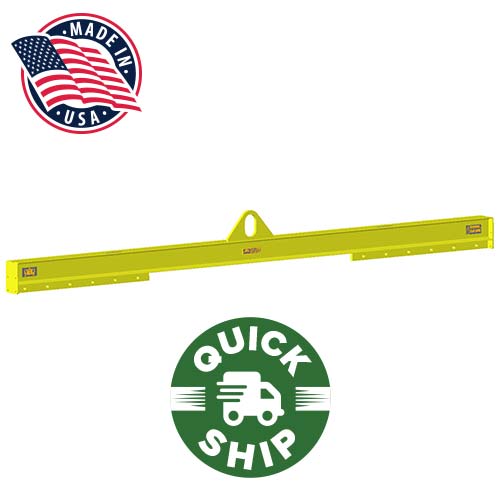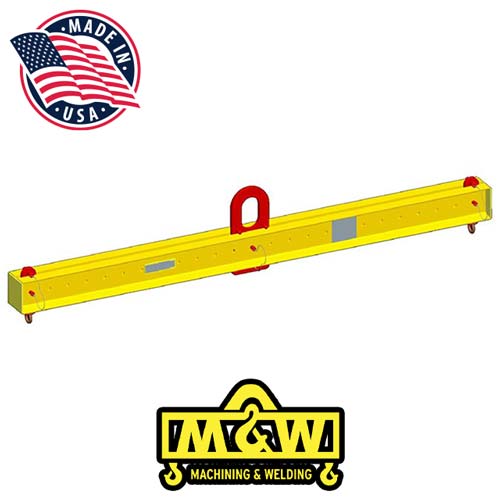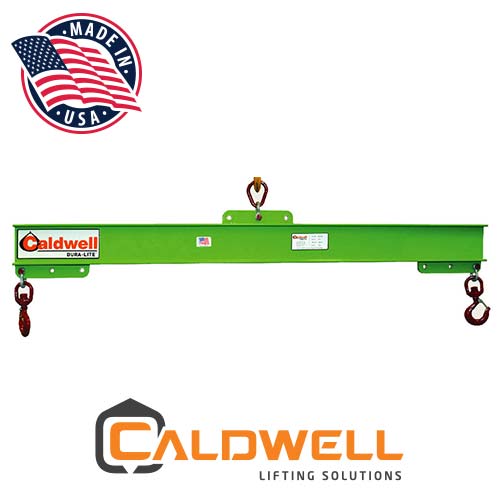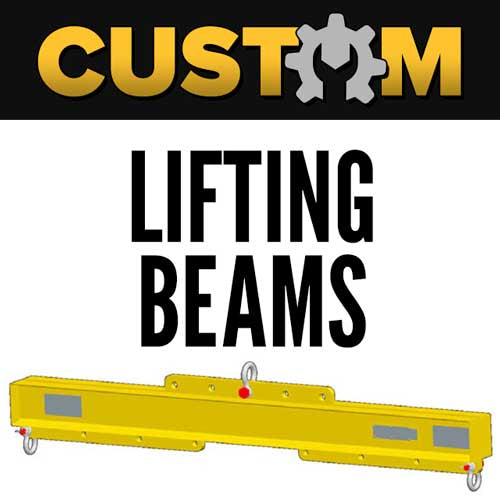Lifting Beams & Spreader Bars
Optimize Your Lifting with a Spreader Beam or Lifting Beam
When lifting heavy or oversized loads, the right equipment makes all the difference. Lifting beams and spreader beams / bars are below-the-hook lifting devices designed to improve load stability, reduce stress on lifting slings, and enhance safety during overhead lifts. Whether you're working in construction, manufacturing, logistics, or warehousing, lifting beams and spreader bars ensure efficient and secure material handling.
All of our lifting beams and spreader bars are made in the USA and manufactured to exceed all ASME B30.20 regulations. They are proof loaded and shipped with certification paperwork, making jobsite safety compliance simple.
Do I Need a Lifting Beam or a Spreader Beam / Bar?
Many people use the term "spreader beam" interchangeably for all of the items in this category. However, when it comes to choosing the right one for your application, knowing the differences between each type is essential.
Key Differences
- Load Distribution – A lifting beam supports a load with a central lifting point, while a spreader beam distributes weight evenly across multiple points.
- Headroom Considerations – Lifting beams require less vertical clearance than rigging spreader bars.
- Structural Integrity – A spreader beam uses compressive forces, whereas a lifting beam relies on bending forces.
The primary difference is the way they distribute the weight of the load during the lift. A lifting beam is under pressure at the single lifting point and therefore subject to shear and bending, while a spreader beam is designed to work under compression and spreads the load out evenly over a longer area.

Additionally, because there is just one lift point on a lifting beam and bending will occur during lifts, they are required to be larger and heavier than a spreader bar. However, the one point connection design means it works better in low headroom applications.
A lifting spreader beam is suspended from two lifting points, making them particularly useful for handling wide, delicate, or heavy loads while maintaining balance and preventing damage. They are also well-suited for situations where the lift points are far apart.
Types of Lifting Beams and Spreader Bars
- Fixed Lifting Beams - Designed for consistent lifting applications with a single load configuration.
- Adjustable Lifting Beams - Feature multiple lifting points for handling different load sizes.
- Specialty Lifting Beams - Created for use in more specialized tasks, such as container lifting or plate lifting.
- Fixed Spreader Beams - Rigid and pre-set for specific lifting tasks.
- Adjustable Spreader Beams - Allow length adjustments to accommodate different load sizes.
Lifting Beam Features
A lifting beam is a long I-beam with a link or eye on the top to allow for connection to the crane or other lifting machine's hook. It also has two or more connection points on the underside where the load is connected.
Lifting beams are excellent for general purpose lifting, as well as for lifting weak or flexible loads that require the additional support of other equipment like lifting magnets or a lifting vacuum.
An additional benefit is the ability to lift more than one load at a time, since it is typically designed with two or more connection points. The design and construction make these an ideal choice if there is little headroom available in the lifting area.
Rigging Spreader Bar Features
A spreader bar or spreader beam is designed for use with a sling that connects the lifting machine hook to the ends of the beam. The beam typically has connection points on the underside that hook to the cargo for lifting.
Spreader beams distribute the load across more than just one point, resulting in increased stability. They are excellent for applications where the cargo is too large or heavy to be lifted from one singular connection point.
A spreader beam is also ideal for use in situations where load control is important and/or the lift points are far apart. A spreader beam or bar can accommodate a sling on each end of the bar to lift long, narrow cargo held horizontally.
Because the sling legs lengthen the distance from the hook to the cargo, spreader beams as lifting devices are generally a limited option when there is little headroom clearance.
Lifting Slings and Rigging Supplies
We offer a full line of lifting slings, as well as rigging supplies and hardware to complete your lifting setup. Be sure to check our How to Choose a Lifting Sling page for more information on the different types of lifting slings.
Questions?
Not sure what equipment you need for your job? Wondering which product is comparable to a specific Caldwell, Peerless, or other lifting beam? Give our product specialists a call. They'll be happy to go over our lifting beams and help determine which would work best for your application.



